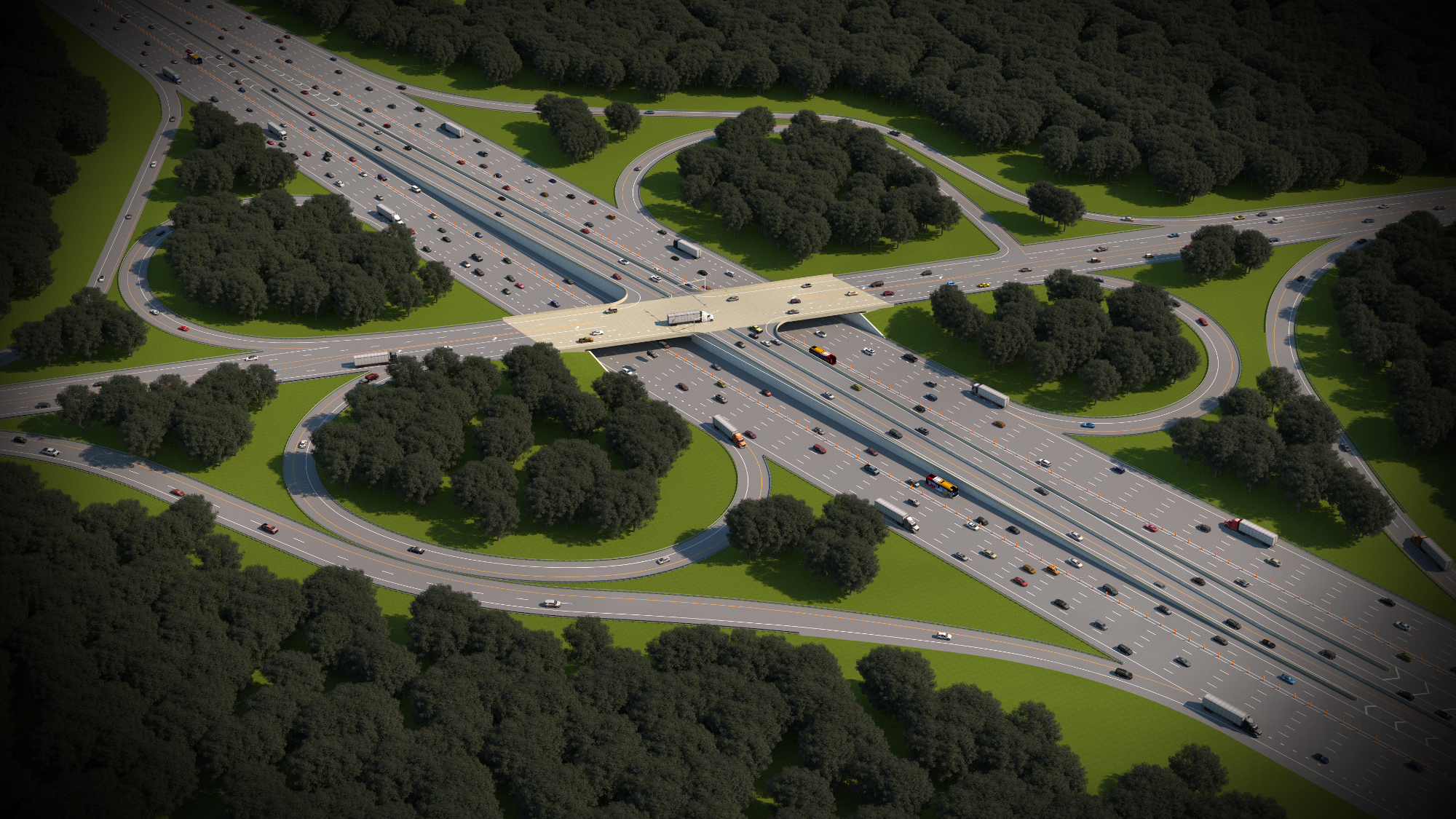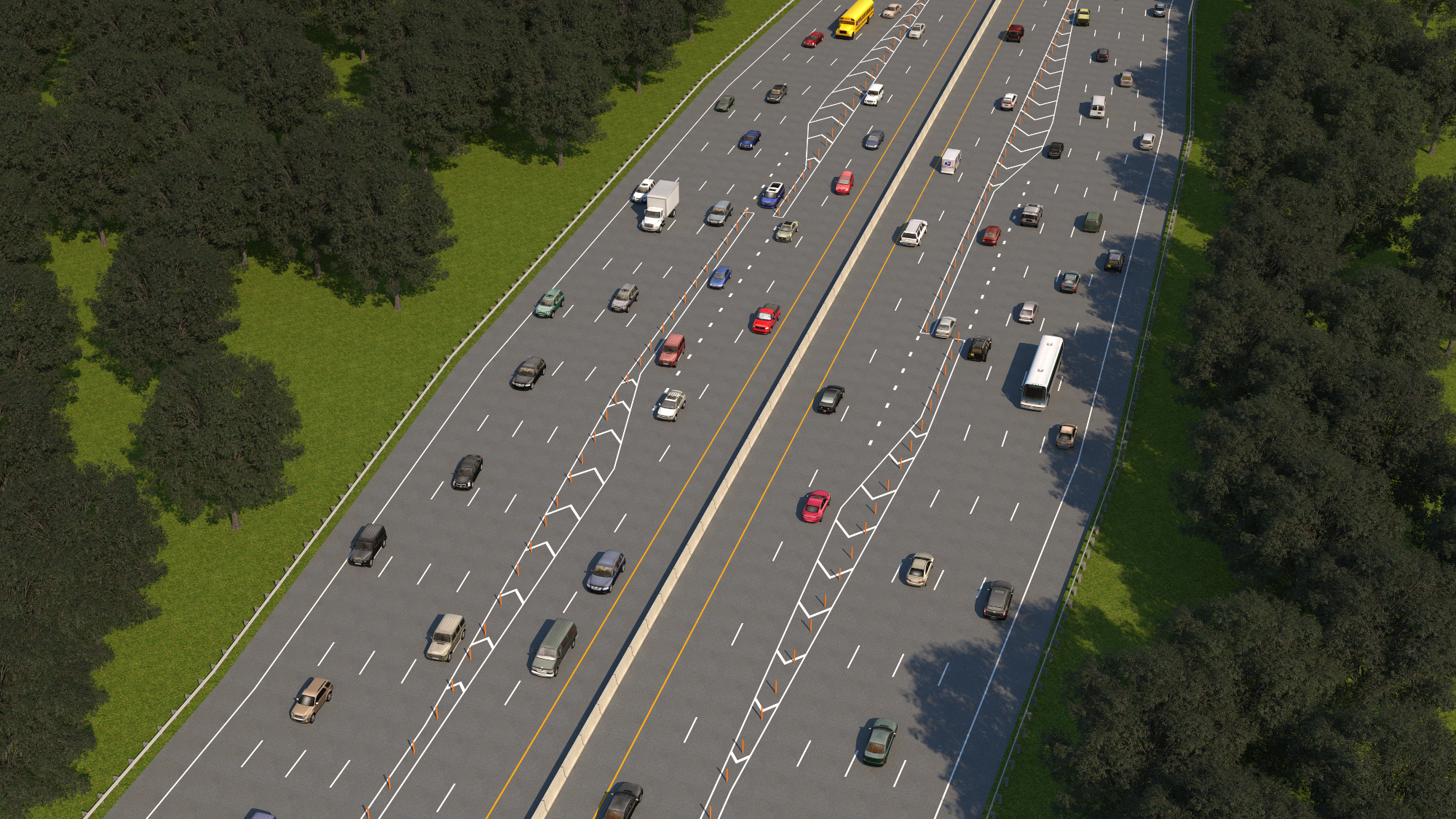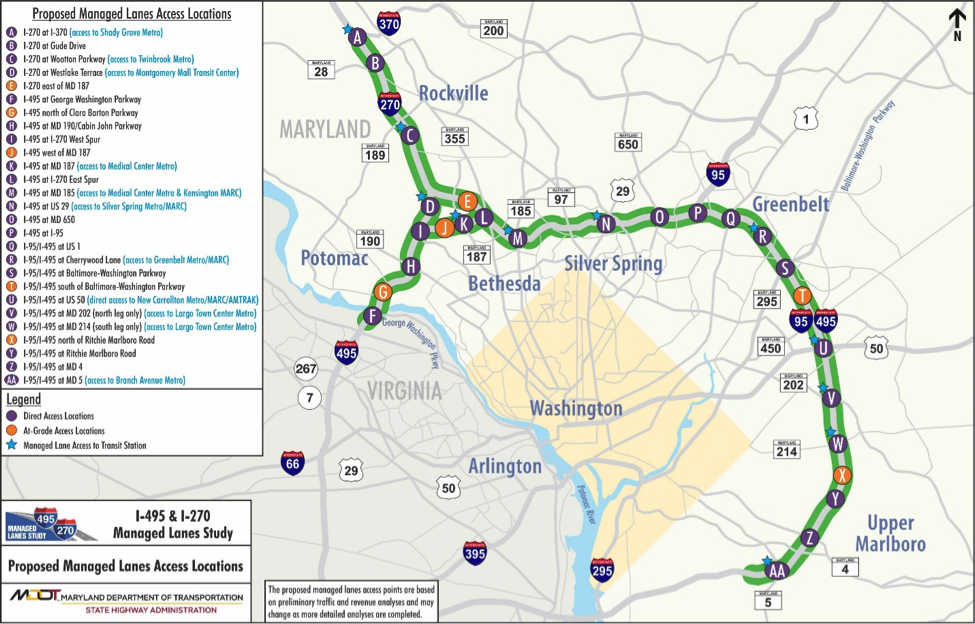Build Alternatives in the DEIS
After applying the refined screening criteria based on additional engineering, traffic, financial, and environmental analyses, all the Screened Alternatives except Alternative 5 met the Study’s Purpose and Need. The No Build Alternative does not meet the Study’s Purpose and Need but is retained for comparison with other alternatives. The remaining alternatives (Alternatives 1, 8, 9, 10, 13B, and 13C) were concurred upon by the Cooperating Agencies as the Alternatives Retained for Detailed Study (ARDS). Following this concurrence step, MDOT SHA and FHWA evaluated another additional alternative called Alternative 9 Modified (Alternative 9M), in response to public and agency input. Alternative 9M consists of a blend of Alternatives 5 and 9 with the primary difference on the top side of I-495 between I-270 and I-95 being the addition of one managed lane per direction instead of two managed lanes. Alternative 9M was evaluated and determined to be a reasonable alternative, and thus is included in addition to the ARDS as a Build Alternative for further evaluation in the Draft Environmental Impact Statement (DEIS).
The alternatives development process and analysis and detailed descriptions of the alternatives are presented in Chapter 2 of the DEIS. Excluding the No Build Alternative, the five ARDS (8, 9, 10, 13B, and 13C) and Alternative 9M are referred to as the Build Alternatives. These six Build Alternatives and the No Build Alternative are evaluated in the DEIS and listed in the chart below. Click each alternative in the chart to view artistic renderings and descriptions that show how the alternative could work.

To view mapping of the Build Alternatives analyzed in the DEIS and the environmental resources along the study corridors, review the interactive map here.
Proposed I-495 and I-270 Managed Lane Access Locations
To evaluate environmental and traffic effects, MDOT SHA has assumed that the proposed managed lanes on I-495 and I-270 would be physically separated from the general purpose lanes by a four-foot wide buffer space with plastic pylons. The pylons would be easy to remove and flexible enough to provide access for emergency vehicles to and from the managed lanes during incidents and emergencies. Reversible managed lanes would be separated from the general purpose lanes by concrete barriers. Drivers traveling in the general purpose lanes would be restricted from entering the managed lanes except at designated access points.
Several options to provide access to and from the proposed managed lanes are under consideration as a part of this Study. In the DEIS, access to and from the proposed managed lanes has been planned via direct access ramps at existing and new interchanges and at-grade auxiliary lanes. These proposed access options and the locations on I-495 and I-270 are described below.
Direct Access
At locations along I-495 and I-270, direct (grade-separated) access ramps would carry managed lane traffic directly to and from major interchanges with other interstates and with the local street network.

Auxiliary Lane
Per the Guidelines for Implementing Managed Lanes developed by the National Cooperative Highway Research Program, an auxiliary speed-change lane allows a driver to enter into the managed lane facility by entering an at-grade ramp, traveling through the buffer, and then merging into the managed lane. The same scenario would apply for a driver leaving the managed lane facility to enter the general purpose lanes (National Academies of Sciences, Engineering, and Medicine, 2016).

In total, access to and from the managed lanes is proposed at 27 locations (19 existing interchanges, three new interchanges, and five at-grade locations), as well as at the start of the system along the I-495 inner loop west of MD 5 and southbound I-270 north of I-370. These locations are shown in the figure below.










